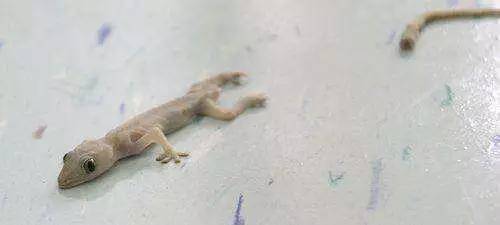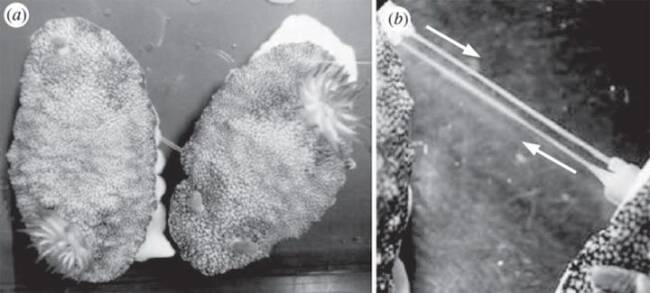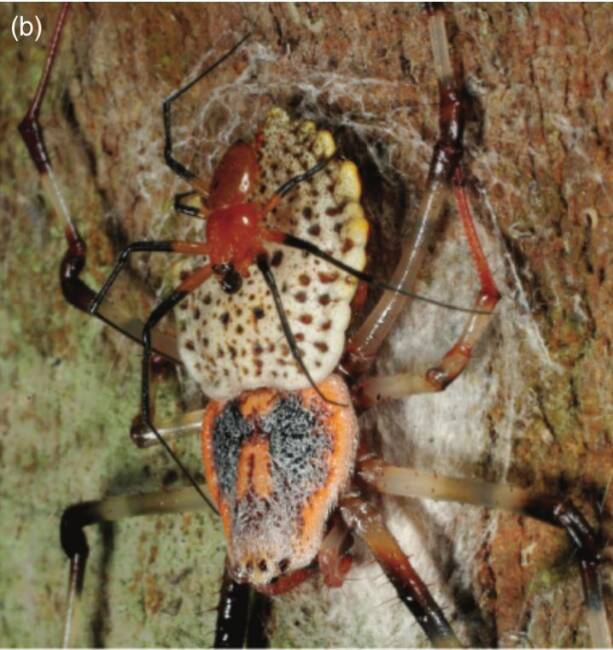In nature, in order to survive and mate, animals will engage in autotomy behavior or self-cutting behavior, including self-castration behavior. SoWhat is the motivation behind animals' self-mutilation behavior?
1. Cut yourself to save your life
When some animals encounter strong enemies, they will cut off part of their body, leaving stumps to attract the attention of natural enemies. There are more than 200 species of animals on the earth that have this ability to cut themselves off.
2. Gecko tail docking
The gecko's self-cutting behavior is the most well-known. When it encounters a predator or is pulled by an external force, its tail muscles will contract violently and break off. The nerves in the newly severed tail are not necrotic and will keep wagging to confuse the enemy. Meanwhile, the gecko had already fled.
The gecko's tail is docked at a special cartilage septum in the middle of the same vertebral body (not at the joint between the two tail vertebrae). The gecko tail vertebrae form a special diaphragm structure during the ossification process, which can be broken due to strong contraction of the tail muscles. Some cells in the transverse septum maintain the ability to differentiate throughout their lives, which allows the gecko to regrow a new tail soon after its tail is docked.

3. Crab’s broken legs
Crabs have as many as eight legs. Crabs with injured legs during a fight will sometimes break their legs quickly, and the broken area will immediately secrete a transparent liquid to cover the wound, completely sealing blood vessels and nerves. Crabs with broken legs gradually regenerate their damaged limbs through molting.

4. Earthworm tail cutting
There are approximately 2,500 species of earthworms in the world, and their regeneration abilities vary greatly. Take the Eisenia foetida as an example. After the earthworm cuts itself, new cell clusters will form on the section, forming an embolus to close the section, preventing the loss of blood and tissue fluid and the invasion of microorganisms.
Only by re-forming a closed body cavity are they likely to survive, followed by a regeneration phase. It usually takes longer for an earthworm to regenerate its head than its tail. This is because important organs such as the brain and reproductive organs are concentrated in the head, while the tail is mainly the anus and digestive tract, which grow faster.

In addition to the above-mentioned animals, the leg-breaking behavior of stick insects, locusts and other animals is also essentially a self-cutting behavior.
5. Come to mate from the palace
Some animals cut themselves off with their "penis". For these animals, the act of self-uterinement is part of sexual intercourse, which is said to be both painful and pleasurable.
6. Golden silk orb spider from the palace
There is a kind of golden silk orb weaver spider that lives on the African continent and Madagascar. Small male golden silk orb weaver spiders have a mating advantage over larger male golden silk orb spiders because small male spiders have a mating advantage. Being faster makes it easier to get to the female spider you like first.
After mating is completed, the male spider's "penis" will most likely fall off automatically and remain in the female spider's body, forming a mating plug. Once the "penis" of a male spider is broken, the male spider that becomes a "eunuch" will not be able to mate with other female spiders. The probability of shedding mainly depends on the aggressiveness of the female spider. The more aggressive the female spider is, the easier it is for the male spider's "penis" to fall off.

7. Sea slug from the palace
There is a sea slug called Chromodoris reticulata that lives in the Indo-Pacific waters. It looks like a red and white baby slipper, with two tentacles on its head and a set of flowers on its back. Its "penis" breaks off every time it's done mating, but don't worry! It has backup "penis" - as many as two backup "penis" coiled inside its body.
The sea slug Chromodoris reticulata belongs to the nudibranch group and is a hermaphrodite. When they have sex, both parties will come close to each other and combine with each other at the same time. From a distance, it seems like a white thread connects them together. When zoomed in, two distinct parallel "penises" can be discerned. They fill each other's vaginas with sperm for about 10 minutes. After mating, their "penises" were not left inside each other's bodies. About 20 minutes after they crawled away, their disposable "penis" completely broke off. The next time you want to mate, squeeze out one of the remaining two in the body and use it.

Through the above descriptions of animal self-cutting behaviors, everyone must have a preliminary understanding of animal self-cutting behaviors. The so-called self-cutting behavior is a survival strategy used by some animals to preserve life and reproduce at the cost of giving up part of their body. It is the result of the development of biological evolution and natural selection in nature.
animal tags: survival mating self-mutilation behavior gecko crab earthworm regeneration self-uterine spider slug reproduction
We created this article in conjunction with AI technology, then made sure it was fact-checked and edited by a Animals Top editor.